Master Python Programming For Beginners With These Awesome Notes . Python is Popular Programming Language that is easy to read and write. Python can be used for many different Ways like building websites , create Desktop application , analyzing data .
Introduction to Python
Python was created by Guido van Rossum in 1991 and is currently overseen by the Python Software Foundation. This was done with a focus on code readability and the syntactical structure of the language enables one to express ideas in a few lines. It is the language that enables the user to work faster and also helps in merging different systems.
Python Language Features
- Interpreted
- Platform Independent
- Free and Open Source
- High-level Language
- Simple
- Embeddable
- Robus
- Rich Library Support
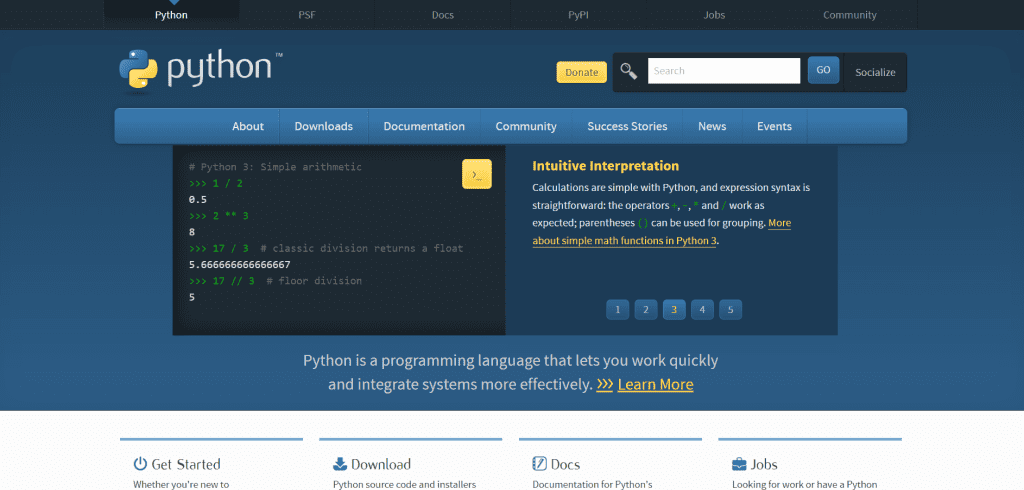
Install python
Python Programming Prerequisites What to learn before Python
- Basic Understanding About programming languages.
- Having Ability to to solve problems and design logical solutions
- Write Efficient Code
- Have Understanding of data types such as integers, strings, lists, and dictionaries
- Have basic Idea about arithmetic operations and basic mathematical concepts
- Having Ability run scripts using a command-line interface
- Knowledge of if-else statements, loops, and functions
- Knowledge about IDEs and Text Editors
- Basic knowledge of reading from and writing to files in Python
In this Python Programming for Beginners Course you will be Able to learn Prerequisites python
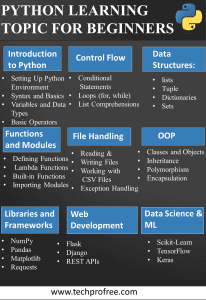
Python Programming source code
Python source files are those files that have a “.py” extension. An example of a Python module is “hello.” The simplest way of running it is by typing the command “python hello.py Alice” which loads the Python interpreter to execute the code in hello.py and then executes this file through the command line taking “Alice” as the argument. Check all the various possibilities you have when operating Python via the command line.
It is suitable for novices: it has a simple syntax and can be used in virtually all fields, including website creation and data analysis. This is a multipurpose language and is supported by a large number of users and developers.
Master Python programming Course Outline
Table of Contents of This Complete Course Master Python programming for Beginners.
python Setup
Guides you through installing (Setup) Python on Mac-OSX, Windows or Linux and setting up your development environment. This setup is crucial because it prepares your system for running Python code, this is the first step in any programming journey.
A Good First Program
In this exercise, the learner will write the first Python program, a simple script that prints text to the screen. This exercise focuses on building your confidence and introduces you to basic syntax.
Comments and Pound Characters
Comments are essential for documenting your work and making your code understandable to others.
Numbers and Math
Covers basic arithmetic operations.
Variables and Names
Variables are a foundational concept in programming that allows learner to store and manipulate data. Therefore it is necessary to get expertise in it, this book will give you all the experience of coding A-Z.
More Variables and Printing
Expands on variables and introduces string formatting, assist/aid or help to produce readable output, which is key for effective coding.
Strings and Text
This exercise focuses on manipulating text with strings; it is a common task in many programming circumstances.
More Printing
Here in this section it provides practice with printing and formatting strings.
Printing, Printing
Consistency with practice is necessary with string formatting, which is essential for creating dynamic text outputs in your programs.
Printing, Printing, Printing
Combines printing and variables in more complex ways, building on what you’ve learned to create more advanced outputs. Try not to repeat mistakes again and again.
What Was That?
Escape sequences are used to format strings in specific ways, such as adding new lines or tabs.
Asking Questions
It is an essential part of making interactive programs. Teaches how to get user input.
Prompting People
Expands on what has been written about how to build on user input by teaching how to prompt users effectively, enhancing the usability of the programs that you write.
Parameters, Unpacking, Variables
Introduces command-line arguments, it is more complex way of passing input that is useful when creating scripts.
Prompting and Passing
Connects input with command-line arguments, and enriches these notions by applying them simultaneously.
Reading Files
This chapter explains how to open and read files. This is very critical skill when dealing with data from outside your programs.
Reading and Writing Files
Enables learners to write files which is very important when you are performing data processing since it enables you to create and even modify files from your code.
More Files
This exercise help you to strengthen your file handling skills in Python.
Names, Variables, Code, Functions
Introduces functions, which are blocks of reusable code, and explains the syntax of the function definition statement. It is significant for writing clean, efficient, and modularity of the programs.
Functions and Variables
This chapter discovers and explains about python functions and their variables.
Functions and Files
Integrates functions with files, demonstrating how to write more advanced programs that operate on data from other sources.
Functions Can Return Something
This is crucial when constructing the logic and making decisions in your code. Explains how to return values from functions.
What Do You Know So Far?
This quiz will help you revise all that you have studied up to this point. Reviewing is important because it helps you understand what you have learned and what you still need to practice.
Read Some Code
Motivates you to learn from other people’s code and makes you understand what has already been written in the code.
More Practice
Provides more coding practice, which is essential for mastering the concepts introduced earlier.
Even More Practice
Go on and do more practice exercises to ensure that you are prepared for further more complicated lessons.
Congratulations, Take a Test!
This includes a quiz to check your understanding of the material and see how far you’ve come and what you still need to learn.
Memorizing Logic
Emphasizes memorization of important programming logic that assists in coding in the shortest time possible.
Boolean Practice
In this exercise writer presents Boolean logic which is basic to decision-making in programming.
What If
Clarifies conditional statements, which enable your programs to decide on a course of action depending on certain conditions.
Else and If
The learner will grasp the “else” and “if” clauses of the conditional statements to allow for more comprehensive decision-making.
Making Decisions
Builds on previous exercises in logic and conditionals to develop programs that make decisions.
Loops and Lists
Loops and lists are explained which are important in dealing with sets of data and in creating repetitive operations.
While-Loops
Explores while-loops, another kind of loop that loops through a block of code depending on a condition, giving you more control over your program’s flow. It is as important as loops and lists.
Accessing Elements of Lists
It includes study drills; and how to access elements of lists.
Branches and Functions
Here you as a learner will explores the use of conditionals and functions in one section and how to build more advanced and flexible programs in another section. It need focus and drill to expertise.
Designing and Debugging
The fundamental concepts of software design and debugging that are important when developing robust code.
Symbol Review
Get a quick look at all the symbols and syntax that you have come across in the course of learning Python to have a good understanding of the structure of the language.
Doing Things to Lists
Explains operations on lists, which are one of the most used data structures in Python.
Dictionaries, Oh Lovely Dictionaries
One should must introduce his/herself to dictionaries; it is a data structure that allows storing and manipulating data in the form of key-value pairs.
Modules, Classes, and Objects
Object-oriented programming concepts are very important in developing large-scale software systems. It is about modules, classes, and objects which are dictionaries, modules and mini-ports respectively. Grab these things to get hands-on experience and expertise in Python development.
Learning to Speak Object-Oriented
It enhances your knowledge of object-oriented programming hence making it easier to deal with large projects and frameworks.
Is-A, Has-A, Objects, and Classes
This area of the book helps to conquer how objects relate to classes which is important when structuring your code and determining how the code will be laid out.
Basic Object-Oriented Analysis and Design
Teaches the fundamental concepts of software design based on an object-oriented paradigm.
Inheritance vs. Composition
Learn two of the most important principles in OOP, which are useful when developing extensible code. Implicit inheritance, override explicitly and alt before or after; all these are combined in this exercise.
You Make a Game
The challenge is making a game using your knowledge and expertise; evaluate your game for its function style, class style, and code style. It provides you with an opportunity to practice all the knowledge gained in the course by offering you a basic game, which is an effective way to reinforce what has been learned.
A Project Skeleton
Explains how to structure a project which is useful when managing and organizing bigger software projects. Install a Python package in this Python project skeleton; create the skeleton project directory for a final directory structure, and test your work using the skeleton.
Automated Testing
Initiated automated testing, a best practice that helps in ascertaining that your code is working as required and minimizing bugs. Write a text case through testing guidelines and look at what you should see after all the study drills.
Advanced User Input
Continues with more detailed approaches like in our game Lexicon (breaking up a sentence, lexicon tuples, scanning input, and exceptions and numbers) to deal with the user input, which is crucial for developing interactive applications.
Making Sentences
It is based on string manipulation and text generation (with match and peek) which is applicable in most of the programming situations.
Your First Website
In these few ending exercises, the learner will gain expertise on how to make a basic website while giving an overview of web development principles that are useful for any software developer. Start making from simple project and fix errors to get full command.
Getting Input from a Browser
Explains how to deal with web forms and user input in a Web context, which is crucial for Web developers. (Like how the web works, how forms work)
The Start of Your Web Game
This is the final step towards an expert in Python web development and game programming combined. If not understand any step revise it and be ready for your final exam.
Tips To Learn Python
Start From Basics
If you are beginners start basic concepts like variables, data types, loops, and functions .
Practice Everyday
Do Practice on Daily basics try to code everyday .
Do Small projects
Work on Real Projects like , Make Small Calculator , Make Small app , Make small blog
Idea About Tools
Having Complete idea about using tool like Jupyter Notebooks , Visual Studio
Idea about Debugging
Idea about How to debugging code. Understanding errors about error and learn what is error and how to fix these type of errors.
Explore Python Libraries
Knowledge about Python libraries like NumPy, Pandas, and Matplotlib . must have idea about Libraries used for Machine learning , data Science , Data Mining
Join Community
Join Different Social Media Communities Like , python Pages on Facebook , Python Facebook group , WhatsApp Groups , Reddit community and Stack Overflow
Set Goal
Set you Goal or your Python learning journey
Stay Updated
Keep up with the latest updates and trends in the Python For Best Practice

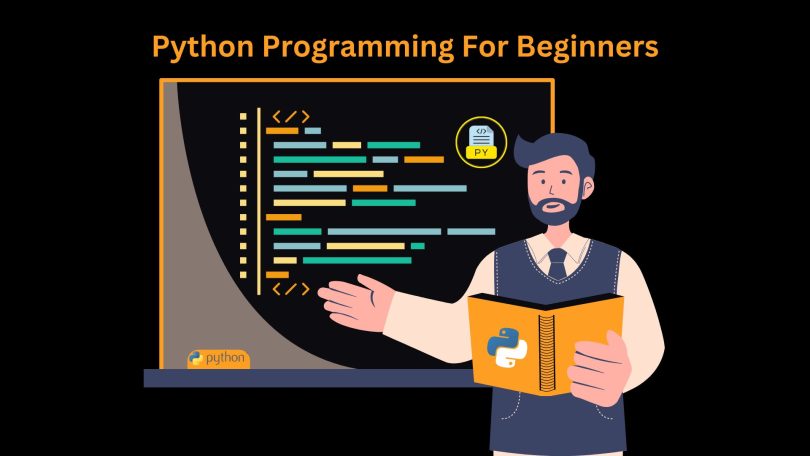
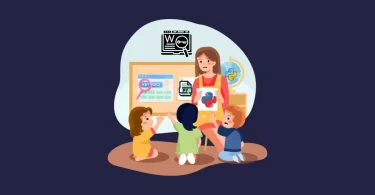
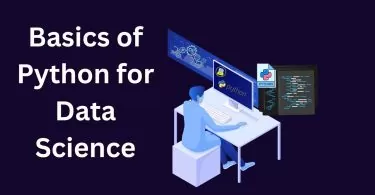
Leave a Comment